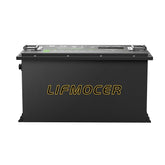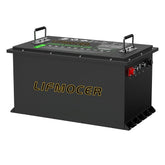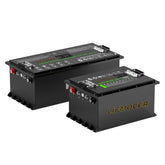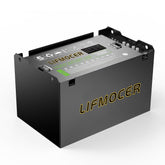The Future Of Lithium Battery Technology: Toyota's Solid-State Breakthrough
Toyota's Solid-State Battery: A Game Changer for Electric Vehicles
Toyota's latest solid-state battery technology is impressive - it only takes 10 minutes to charge a vehicle to travel 1,200 kilometers. This achievement not only marks a new height in lithium battery technology, but also highlights a major innovation in the field of materials science. This technological advancement is expected to revolutionize battery technology for electric vehicles (EVs), bringing users unprecedented fast charging experience and ultra-long driving range. This article will deeply analyze the technical specifications, market potential and safety considerations of this innovation.
Comparing Toyota's Solid-State Battery to Traditional Lithium-Ion Technology
This revolutionary breakthrough in materials science has enabled the perfect combination of solid-state electrolyte and lithium metal anode. Toyota's solid-state battery has achieved comprehensive superiority over traditional lithium-ion battery technology in the three core dimensions of energy density, thermal stability and production efficiency. This not only heralds a qualitative leap in battery performance, but also opens a new era in the development of electric vehicle technology.
Comparative Performance Analysis:
| Feature | Solid-State Battery | Li-ion Battery |
|---|---|---|
| Charging Time | ~10 minutes | 30-60 minutes |
| Range per Charge | ~1,200 km | 400-600 km |
| Energy Density | Higher | Lower |
| Thermal Stability | Improved | Risk of overheating |
| Manufacturing Scalability | Developing | Mature |
This table clearly demonstrates that while traditional lithium battery and Li-ion battery systems have served the industry well, the solid-state battery’s advantages in terms of battery energy density, thermal stability, and rapid charging are poised to redefine electric vehicle battery technology. The term lithium battery appears frequently in this discussion because its evolution is central to current advancements in energy storage cells.
Timeline for Solid-State Battery Commercialization
The journey from laboratory prototypes to commercialized products in the lithium battery arena is complex. Industry experts have provided a detailed timeline that highlights the gradual yet steady progress toward mass adoption of solid-state battery technology:
- 2024-2026: Advanced prototyping and safety validation
- 2027: Toyota begins mass production
- 2028-2030: Other manufacturers scale up production, reducing costs
- 2030+: Mainstream adoption in EVs, overtaking Li-ion battery technology
Impact on the Existing Lithium Battery Supply Chain
The transformation brought by solid-state battery technology is expected to send shockwaves through the entire supply chain of the lithium battery industry. Here are some critical areas of impact:
- Material Sourcing Shifts: The demand for certain components, such as liquid electrolytes, is likely to decline. Instead, the focus will shift toward sourcing materials needed for solid electrolytes, directly affecting the traditional lithium battery supply chain.
- Manufacturing Overhauls: Existing facilities producing lithium batteries may require significant retooling to handle new manufacturing processes associated with solid-state battery production. This is especially true for production lines optimized for conventional Li-ion battery systems.
- Investment Reallocation: Companies involved in the production of energy storage cells are expected to redirect investments toward research and development in solid-state battery technology, given its potential to supersede traditional lithium battery solutions.
Expert Opinions on Fast-Charging Battery Safety
Safety remains a top concern in electric vehicle battery technology. Experts highlight:
- Improved thermal stability: Dr. Goodenough, who made pioneering contributions in the field of lithium-ion batteries and won the Nobel Prize for this, once reminded that if solid-state batteries are to be truly implemented, the heat dissipation problem must be solved first. Especially during fast charging, the temperature inside the battery will rise sharply like a high fever. If the heat cannot be dissipated in time, it will affect performance at the least and may cause safety hazards at the worst. This requires engineers to develop smarter temperature control systems and find new materials that can withstand high temperatures while maintaining stable performance.
- Longevity benefits: Solid-state batteries have a greater advantage over traditional lithium batteries - longer life. The increase in battery energy density and attenuation rate will allow future devices equipped with solid-state batteries to be used for five or six years without replacing the battery. This is especially important for electric vehicle users, as it can save the cost of replacing batteries;
- Fast-Charging Battery Safety: However, the fast charging capability of solid-state batteries is like a double-edged sword. Although it can achieve a high-end experience of 80% full charge in 10 minutes, too fast charging speeds will also bring new safety risks. Experts have repeatedly emphasized that how to ensure safety while pursuing extreme charging speeds has become a difficult problem that the entire industry must overcome.

Conclusion: A New Era for Lithium Battery Technology
This technological revolution triggered by solid-state batteries is subverting the 30-year lithium battery industry order. When energy density breakthroughs and ultra-fast charging capabilities become a reality, it will not only bring about a leap in product performance, but also a reconstruction of the entire energy storage ecosystem. In this transformation, only those companies that can accurately grasp the technological turning point and quickly adjust their strategic direction can become the leaders of the new cycle.
FAQs
Q: How does a solid-state battery differ from a lithium-ion battery?
A: A solid-state battery replaces the liquid electrolyte in a traditional Li-ion battery with a solid electrolyte, improving safety, battery energy density, and charging speed.
Q: When will Toyota’s solid-state battery be available for consumers?
A: Toyota aims to begin mass production in 2027, with widespread availability expected by 2030.
Q: What challenges remain for solid-state battery adoption?
A: The primary challenges include manufacturing scalability, cost reduction, and ensuring reliability for large-scale EV deployment.
Q: Will solid-state batteries replace lithium-ion batteries entirely?
A: While solid-state battery technology is promising, Li-ion battery solutions will continue to dominate in applications where cost-effectiveness is a priority.
















